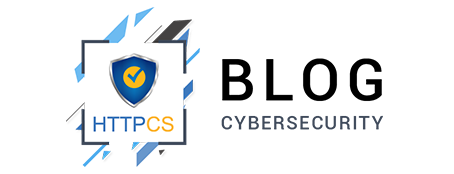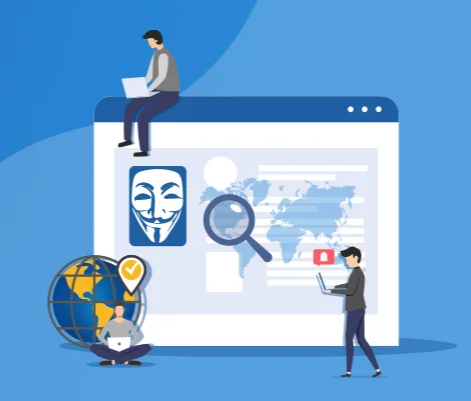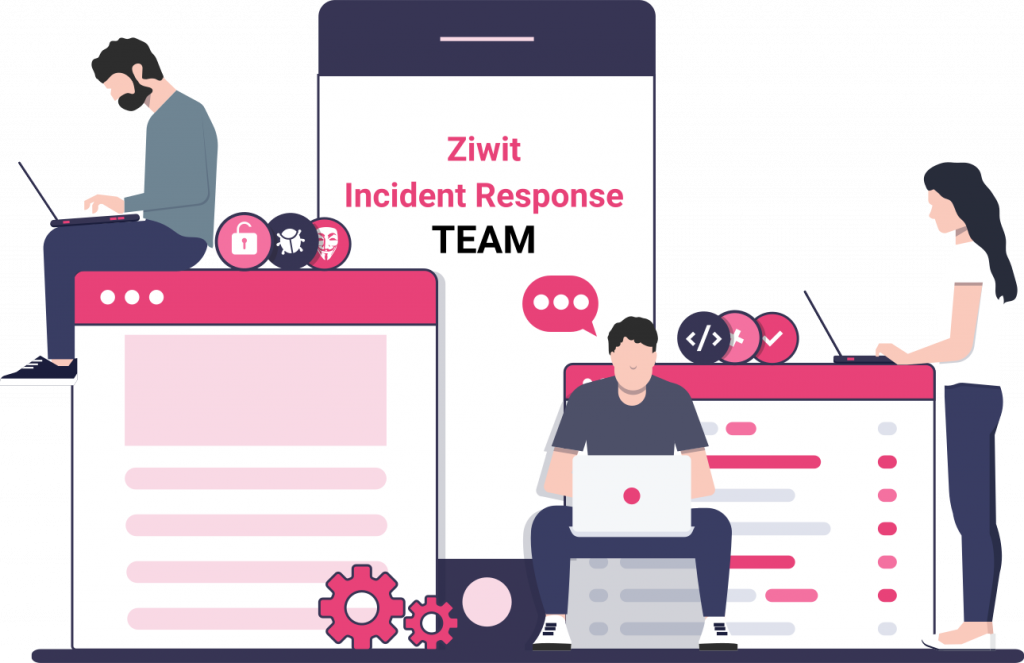The 7 good resolutions in Cybersecurity for professionals
To protect themselves, professionals must take concrete steps to strengthen their cybersecurity. Here are 7 good resolutions to adopt in 2024 !
Cybersecurity is a major issue for professionals, whatever their sector of activity. Cyberattacks are increasingly sophisticated and can have serious consequences, both financial and reputational.
To protect themselves, professionals must take concrete steps to strengthen their cybersecurity. Here are 7 good resolutions to adopt in 2024:
Stay informed about the latest cyber threats
In an increasingly digital world, cyber threats are omnipresent. Cyberattacks can have a significant impact on individuals, businesses and governments. It is therefore essential to stay informed about the latest cyber threats so that you can protect yourself against them.
Follow trusted news sources
There are many sources of information on cyber threats, but it is important to rely on reliable sources. Government agencies, cybersecurity companies and trade media are good sources of information.
For example, the Canadian Center for Cyber Security (CCCS) regularly publishes reports on the latest cyber threats. These reports provide detailed information on types of cyber threats, known vulnerabilities and protective measures.
Read security bulletins
Government agencies and cybersecurity companies regularly publish security bulletins that provide information on the latest cyber threats and known vulnerabilities. These newsletters are a great way to stay on top of the latest cybersecurity trends.
For example, the National Institute of Standards and Technology (NIST) regularly publishes security bulletins that inform of the latest known vulnerabilities. These bulletins provide information about vulnerabilities, available patches, and protective measures.
Follow social networks & blogs
Social networks and dedicated blogs can be a valuable source of information on cyber threats. Many government agencies and cybersecurity companies use social media and blogs to share information about the latest threats and vulnerabilities.
For example, the FBI has a Twitter account where it posts information about the latest cyber threats.
Another example, the HTTPCS Cybersecurity blog regularly publishes articles on the latest news in the field of cybersecurity.

Participate in cybersecurity training
Cybersecurity training can help you understand the latest cyber threats and learn how to protect yourself against them. Many organizations offer cybersecurity training, including government agencies, cybersecurity companies, and universities.
Examples of Cyber Threats
Here are some examples of cyber threats that are likely to evolve in 2024:
Ransomware
Ransomware is a form of cyberattack that aims to extort money from the victim. Ransomware is becoming more sophisticated and difficult to detect.
Ransomware is a growing threat to individuals, businesses and governments. Cybercriminals use ransomware to block access to the victim’s data or computer systems. The victim is then forced to pay a ransom to regain their access.
Ransomware is becoming more and more sophisticated. Cybercriminals now use advanced techniques to evade antivirus software and firewalls. They also use social engineering techniques to trick victims into opening malicious attachments or clicking on infected links.
Social engineering
Social engineering is a technique that uses human psychology to deceive the victim. This method is often used to distribute malware or to obtain sensitive information.
Social engineering is a significant threat to individuals, businesses and governments. Cybercriminals use social engineering to trick victims into doing something they shouldn’t do.
For example, a cybercriminal may send a fraudulent email that appears to come from a trusted source. The email may ask the victim to click a link or download an attachment. If the victim clicks on the link or downloads the attachment, they may be infected with malware.
Denial of service (DDoS) attacks
Denial of service (DDoS) attacks aim to make a website or service inaccessible. DDoS attacks are becoming more common and can be used to disrupt the operations of a business or organization.
DDoS attacks are a significant threat to businesses and organizations that rely on the Internet. Cybercriminals use DDoS attacks to make a website or service inaccessible. This can result in loss of revenue, business disruption and reputational damage.
DDoS attacks can be carried out using a network of compromised computers, called a botnet. The botnet is controlled by the cybercriminal.
Adopt a Zero Trust approach
Zero Trust is a network security strategy that relies on the principle that any user or device, whether internal or external, must be authenticated and authorized before accessing resources. This approach is designed to mitigate the risks associated with cyberattacks, particularly insider attacks.
The Zero Trust approach offers several advantages over traditional security approaches. It is more effective in mitigating the risks of cyberattacks because it does not rely on implicit trust in users or devices. It is also more flexible and adaptable to changes in the security environment.
The three fundamental pillars of the Zero Trust approach are:
Strong authentication
All users and devices must be authenticated before accessing resources. Strong authentication uses multi-factor factors, such as passwords, tokens or fingerprints.
Context-based authorization
Access to resources is granted based on the context of the access request. Context includes factors such as user identity, user location, device used, and time of request.
Ongoing monitoring and response
User and device activities are continuously monitored for anomalies. Anomalies are reported to security teams so they can respond.
Invest in employee training
Investing in employee cybersecurity training is one of the best ways to protect your organization from cyberattacks. Employees are often the first line of defense against cyber threats, and proper training can help them recognize and avoid risks.
There are many benefits to investing in employee cybersecurity training. Here are some of the most important:
Reduced risk of cyber attack
Cybersecurity training can help employees recognize and avoid cyber threats. This can help reduce the risk of cyberattacks, which can lead to financial losses, business disruption and reputational damage.
Improved compliance
Many regulations require organizations to provide cybersecurity training to employees. Proper training can help organizations comply with these regulations.
Increased productivity
Cybersecurity training can help employees work more efficiently and productively. This can be done by helping them avoid distractions and interruptions caused by cyber threats.
Ziwit Academy
Ziwit Academy is a cybersecurity training organization that provides cybersecurity training and awareness to businesses and public organizations.

It offers a range of training, from basic training to advanced training. Training is delivered by experienced cybersecurity experts and is tailored to the specific needs of participants.
Ziwit is Qualiopi certified by the French Republic. Qualiopi is a quality certification for providers of actions contributing to skills development (PAC). It attests to the quality of the process implemented by these service providers, whether training actions, skills assessments, actions to validate acquired experience or training actions.
Opt for cybersecurity solutions
Cybersecurity is one of the most important areas of information technology today. Businesses and organizations of all sizes must implement cybersecurity solutions to protect their data and systems against cyberattacks.
Cybersecurity solutions are a significant investment, but they are essential to protect your organization against cyberattacks. By choosing the right solutions, you can help protect your data, your systems and your reputation.
Vulnerability scanners
HTTPCS Security is a cloud-based web vulnerability scanner that allows organizations to detect and remediate vulnerabilities in their web applications. It uses next-generation vulnerability scanner technology to identify known and unknown vulnerabilities, including zero-day vulnerabilities.

HTTPCS Security offers the following features:
- Complete and in-depth scanning of web applications: HTTPCS Security scans all pages and components of a web application to detect vulnerabilities.
- Next–generation vulnerability scanner technology: HTTPCS Security uses next-generation vulnerability scanner technology to identify known and unknown vulnerabilities, including zero-day vulnerabilities.
- Clear and Concise Scan Results: HTTPCS Security scan results are clear and concise, making it easier to understand vulnerabilities and prioritize fixes.
- Built–in Vulnerability Management: HTTPCS Security has built-in vulnerability management, which allows organizations to track vulnerabilities and remediate them efficiently.
Dark Web Monitoring Solution
HTTPCS CyberVigilance is a dark web monitoring solution that enables organizations to detect and respond to threats on the dark web. It constantly monitors dark web networks for mentions of your organization, data, or resources.

HTTPCS CyberVigilance offers the following features:
- Real–time dark web monitoring: HTTPCS CyberVigilance continuously monitors dark web networks for mentions of your organization, data or assets.
- Comprehensive Data Recovery: HTTPCS CyberVigilance recovers all data available on the dark web, including sensitive data, such as passwords, credit card numbers and credentials.
- Advanced data analysis: HTTPCS CyberVigilance uses advanced data analysis to identify the most significant threats.
- Real–time alerts: HTTPCS CyberVigilance alerts you in real time of detected threats, in particular thanks to the HTTPCS Cyber Map, a real-time threat map.
Develop an incident response plan
An incident response plan (IRP) is a document that outlines the steps to take in the event of a cybersecurity incident. It should be clear, concise and easy to understand for all employees who may be involved in an incident response.
An effective PRI should cover the following elements:
- Definition of Incident: An incident is a security violation that may result in data loss, business interruption, or other damage. The PRI should define what an incident is for your organization.
- Risk identification: The PRI must identify the risks to which your organization is exposed. This will help determine appropriate response measures.
- Impact assessment: The PRI must assess the potential impact of an incident. This will help determine the priority of the response.
- Communication: The PRI should describe how to communicate with employees, customers and other stakeholders in the event of an incident.
- Recovery: The PRI must describe how to recover systems and data affected by an incident.
Ziwit Incident Response Team
The Ziwit Incident Response Team is a team specialized in responding to cybersecurity incidents. It is made up of IT security experts who have in-depth expertise in the field of prevention, detection and response to cyber threats.

From threat detection to remediation, the Ziwit Incident Response Team supports you throughout the process to guarantee maximum and prolonged security. Flexible and responsive, our team can intervene on site or remotely, depending on your needs. The intervention is carried out in three stages:
- Detection phase: A forensic analysis is deployed to identify and analyze evidence of compromise.
- Eradication phase: In the event of a proven incident, it is essential to take appropriate measures to eradicate the threat.
- Remediation phase: Risk mapping provides a comprehensive remediation plan with best practice and compliance recommendations tailored to the victim.
Integrate cybersecurity into business strategy
Integrating cybersecurity into business strategy is an essential process for protecting an organization’s digital assets and information. It is a concerted effort that must involve all levels of the organization, from management to employees.
Integrating cybersecurity into business strategy includes the following steps:
Risk Assessment
The first step in integrating cybersecurity into business strategy is to assess the risks the organization is exposed to. This includes identifying important digital assets, potential threats and vulnerabilities.
Important digital assets include data, systems and applications. Potential threats include phishing attacks, ransomware, denial of service attacks, and social engineering attacks. Vulnerabilities are flaws in systems or applications that can be exploited by cybercriminals.
The risk assessment can be carried out by an internal security team or by an external service provider. It can use a variety of tools and techniques, including risk analyses, security audits and penetration testing.
Goals definition
Once risks have been assessed, the organization can set cybersecurity objectives. These objectives must be specific, measurable, achievable, relevant and time-bound.
For example, a specific cybersecurity goal might be to reduce the number of phishing attacks by 50% in one year. A measurable cybersecurity goal could be to measure the number of phishing attacks detected by security systems. An achievable cybersecurity goal could be to implement cybersecurity training for all employees.
Development of a strategy
Once the objectives are defined, the organization can develop a cybersecurity strategy. This strategy must define the measures to be taken to achieve the objectives.
The cybersecurity strategy should cover all aspects of information security, including data security, systems security and application security. It must also include measures to address emerging cyber threats.
Strategy implementation
The cybersecurity strategy must be implemented by all levels of the organization. This includes training employees, using security technologies, and implementing security processes.
Employee training is essential to raise cybersecurity awareness and teach employees security best practices. Security technologies, such as firewalls, intrusion detection systems, and identity and access management solutions, can help protect digital assets and information. Security processes, such as security policies and procedures, can help ensure that security measures are applied consistently.
Monitoring and evaluation
The cybersecurity strategy should be monitored and evaluated regularly to ensure it is effective. This includes analyzing cybersecurity incidents, auditing security controls, and conducting cybersecurity exercises.
Cybersecurity incident analysis allows the organization to identify areas where the cybersecurity strategy needs improvement. Auditing security controls allows the organization to ensure that security controls are properly implemented and maintained. Cybersecurity exercises allow the organization to test its ability to deal with cyber threats.
Carry out security audits
A cybersecurity audit is a systematic process of evaluating the security of a system or organization. Its purpose is to identify potential vulnerabilities and security risks, and recommend corrective actions.
Planning
Planning is an essential step in any cybersecurity audit. It makes it possible to define the objectives of the audit, the scope of the audit and the audit methodology.
The objective of the audit must be clear and precise. It should indicate what the audit aims to achieve. The scope of the audit should define the systems and areas that will be audited. The audit methodology should describe the techniques and tools that will be used to carry out the audit.
Collection of information
Collecting information is an important stage of the audit. It allows the auditor to understand the system or organization being audited.
The auditor collects information from different sources, including:
- Documents, such as security policies and procedures, user manuals and safety reports.
- Interviews with employees, including security managers, system administrators and users.
- Technical testing, such as penetration testing and vulnerability testing.
Information analysis
Analyzing the information allows the auditor to identify potential security vulnerabilities and risks.
The auditor analyzes the information collected to identify areas where the system or organization being audited is vulnerable. Vulnerabilities can be flaws in systems or applications, gaps in security policies and procedures, or a lack of cybersecurity awareness among employees.
Report
The audit report is a document that presents the audit results, recommendations and conclusions.
The audit report must be clear and concise. It must present the identified vulnerabilities and security risks, as well as recommendations for mitigating them.
Cybersecurity Audit by Ziwit
Here are some reasons why you should have an audit carried out by Ziwit:
- Ziwit is an experienced and certified IT security service provider. The company has more than 10 years of experience in carrying out penetration audits and its pentesters are certified by renowned organizations, including obtaining the VISA PASSI issued by ANSSI.
- Ziwit uses a proven methodology to carry out its penetration audits. This methodology allows Ziwit to provide reliable and complete results.
- Ziwit is committed to data confidentiality and integrity. The company uses strict security measures to protect its customers’ data.
